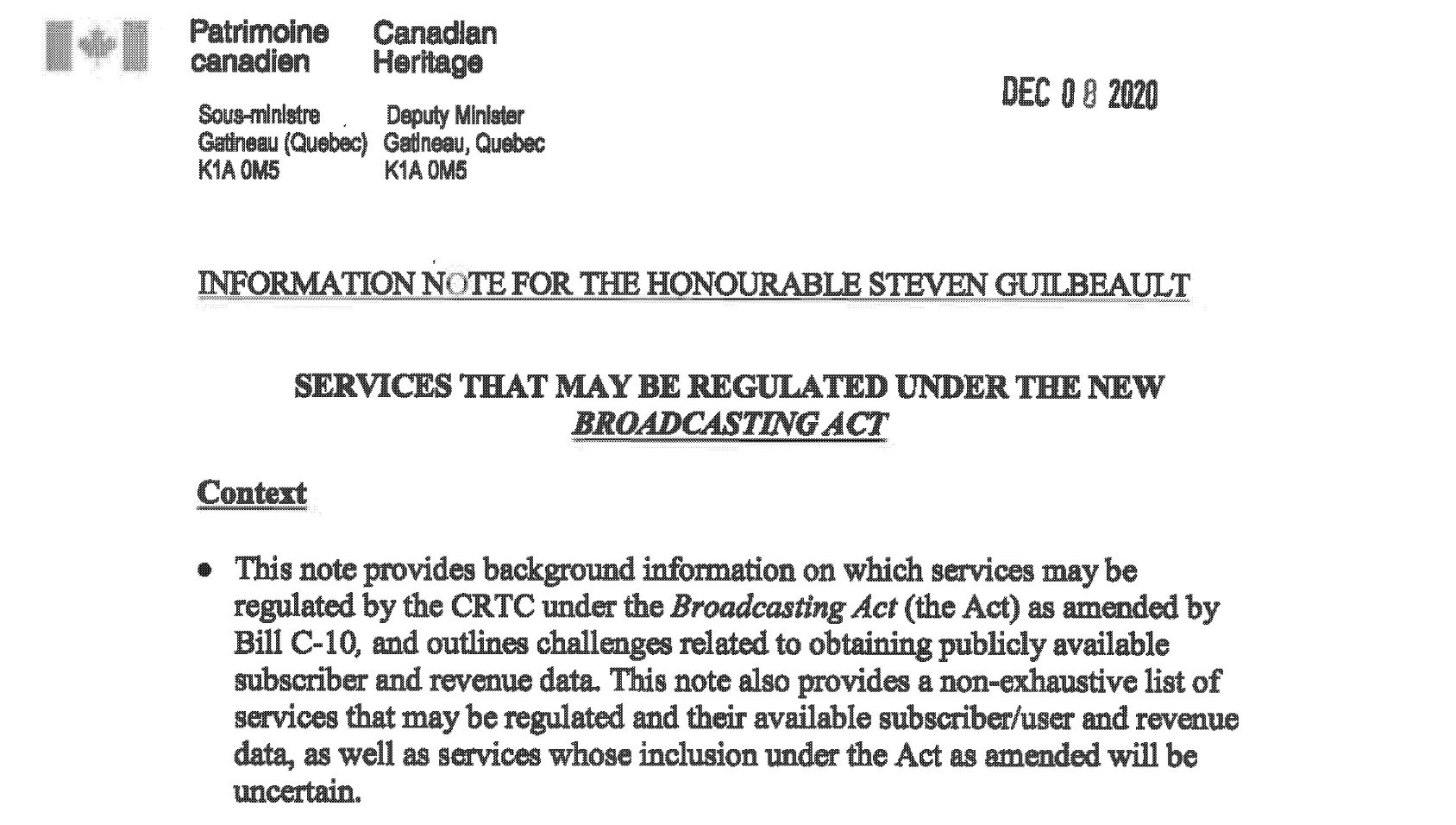In what is likely the most significant political rejection of the Anti-Counterfeiting Trade Agreement to date, the Mexican Senate has voted to recommend against signing ACTA. While the issue in the hands of the President, the domestic opposition is notable as it may foreshadow similar battles in countries around the […]

Canadian Heritage Memorandum, December 8, 2020, ATIP A-2020-00498
Bill C-10
Canadian Chamber of Commerce Justifies Fake Counterfeit Claims With More False Numbers
The retraction on border searches of travellers is good news, though the Chamber should seek to publicly correct the Globe and Mail, which reported otherwise. Moreover, given that some of its members have publicly stated their opposition to the de minimis provision in the Anti-Counterfeiting Trade Agreement – GlaxoSmithKline has said the exclusion of traveller’s luggage “sends out an entirely inappropriate message” – its position on the issue may not be cast in stone.
Even more notable is the suggestion that the Canadian Chamber of Commerce is now basing its $30 billion counterfeiting claim on the 2011 International Chamber of Commerce report.
Canadian Chamber of Commerce Floats Fake $30 Billion Counterfeiting Claim
[Update: New post with the Chamber’s response and more fake figures]
Several years ago I examined the source of the $30 billion claim, which has been repeated on many occasions over the years. The review started with an Access to Information request with the RCMP for the source of the $30 billion claim, which was found in a 2005 report. The RCMP responded that the figure was based on “open source documents found on the Internet.” What were these documents? The RCMP provided two:
First, a March 2005 CTV news story reported unsubstantiated claims by the International Anti-Counterfeiting Coalition, a global anti-counterfeiting lobby group made up predominantly of brand owners and law firms, that some of its members believe that 20 percent of the Canadian market is “pirate product.” That 20 percent figure – raised without the support of any evidence whatsoever – appears to have been used by IACC to peg the cost of counterfeiting in Canada at $20 billion per year.
Second, a 2005 powerpoint presentation by Jayson Myers, then the Chief Economist for the Canadian Manufacturing and Exporters, included a single bullet point that “estimated direct losses in Canada between $20 billion and $30 billion annually.” The source for this claim? According to Mr. Myers, it is simply 3 to 4 percent of the value of Canada’s two-way trade.
In recent years, the RCMP has backed away from the $30 billion claim. In its August 2010 report on IP crime, it declined to set a figure, acknowledging that the numbers “have been subject to debate in recent years.”
U.S. Confirmed as “Lone Hold Out” on ACTA Transparency
KEI has obtained a new document under the U.S. Freedom of Information Act that confirms that the U.S. was the “lone hold out” in disclosing drafts of the Anti-Counterfeiting Trade Agreement during the Summer of 2010.
Burberry, Louis Vuitton Seek Millions in Damages For Counterfeiting Using Current Canadian Law
Burberry and Louis Vuitton have filed lawsuits against three Canadian companies seeking millions in damages for selling counterfeit handbags and other products. The lawsuit relies on current trademark and copyright law.






